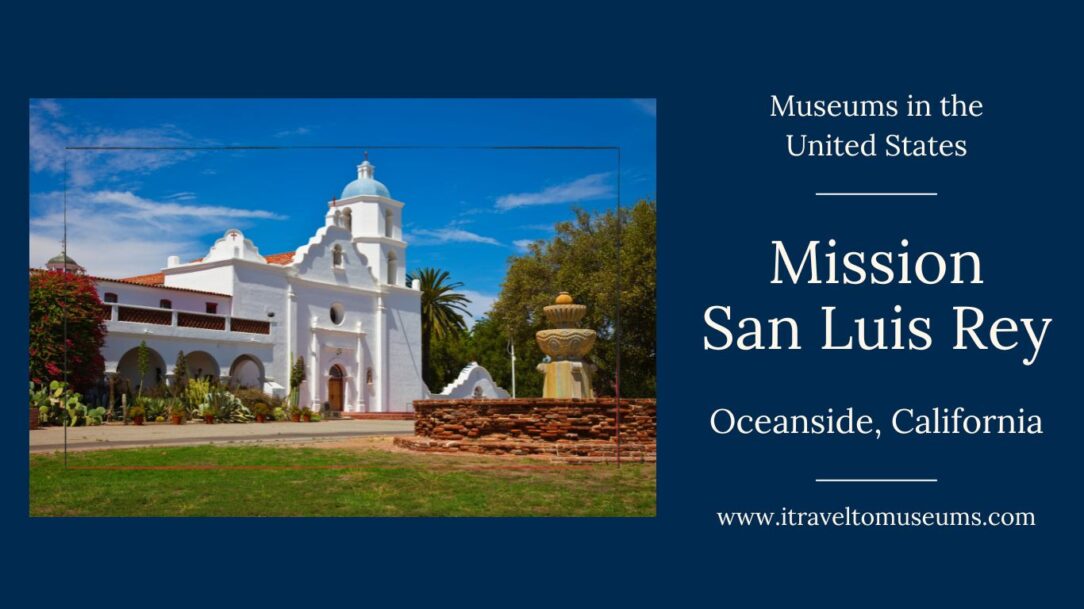Mission San Luis Rey is one of my favorite places in California but I have to confess I am a little biased when I say this. I have been a part of the community since 2017 and I have studied its history since then.
There are many things I can and should share about what was the largest of all of California Missions, but in order to be as fair and accurate as possible, I decided to limit this article to the most important historical information, and explain what an average visitor can experience at Mission San Luis Rey on a regular day.

Information you need for your visit:
Address: 4050 Mission Ave. Oceanside, CA 92057
Parking: Free, on-site
Hours of Operation:
Church: Mon-Sun 8 am to 4pm
Museum: Mon-Sun 10am to 4pm
Admission fee:
Adults: $8
Seniors :$5
Youth (18 and younger) $5
Ages 5 and under: Free
Active military and dependents: Free
Guided tours scheduled on Saturdays and Sundays. For more information, check the mission’s website.
Short History
Mission San Luis Rey was established on June 13th 1798 by Fermin Lasuén and Antonio Peyri. It was the 18th in the California Mission System established by the Spanish empire and was built with the objectives to serve the local native community, and to connect the pre-existing Mission San Diego and Mission San Juan Capistrano. It is located on Luiseño ancestral land.
The Luiseno, or Payómchawichum are the original inhabitants of the San Luis Rey Valley, in North County San Diego. They are one of the western Shoshone tribes. They lived in structures made of reeds and tules called Kiicha, and had a hunter harvester economy. They were also expert basket weavers and this is one of the many traditions they are still trying to preserve. Today, the Luiseno are organized in seven bands or tribes. With the establishment of Mission San Luis Rey, the Payómchawichuum became Luiseño and went to work in the construction and other industries at the Mission.
Fr. Antonio Peyri was the administrator since its establishment. During the 34 years he was in charge, Mission San Luis Rey became the largest and wealthiest mission in Alta California. It had over 900 thousand acres of land and cared for more than 50 thousand head of livestock with numerous farms and ranches that depended on it, as well as native villages.
In 1821, Mexico won its independence from Spain and California became part of the new country. After a few years, laws of secularization were established to get rid of the Spanish Mission system. Mission lands were taken by the government and then sold for political favors to Mexican settlers. The indigenous communities that depended on the Missions became cheap labor for the new Mexican ranchers. After Fr. Peyri’s departure in 1832 and the last resident priest of the Mission, Fr. Jose Maria Zalvidea died in 1846, Mission San Luis Rey was abandoned and left to ruin.
California became part of the United States after the Mexican American way and a state in 1850 during the gold rush. In 1865, President Lincoln signed a land grant giving Mission San Luis Rey back to the Catholic Church, and it was later assigned to the Franciscan Friars. In 1892 a group of Mexican seminarians arrived to restore the mission, Under the leadership of Fr. Jeremiah O’Keefe’s church was repaired, some areas of the quadrangle were rebuilt. Today, Mission San Luis Rey is an active parish, and the home of a community of Franciscan friars, with a retreat center and active cemetery, as well as services for visitors with a museum, gist shop and coffee shop.
What you will see during your visit:
One of the most interesting things to see at Mission San Luis Rey is the Historic Church. Entrance is free. The church was built between 1811 and 1815. The construction and decorative style reflects the combination of different traditions. There are native symbols inside a structure that is traditionally Neoclassical, with some decorative elements inspired from the Baroque and Moorish patterns that were used during the Spanish colonial era.
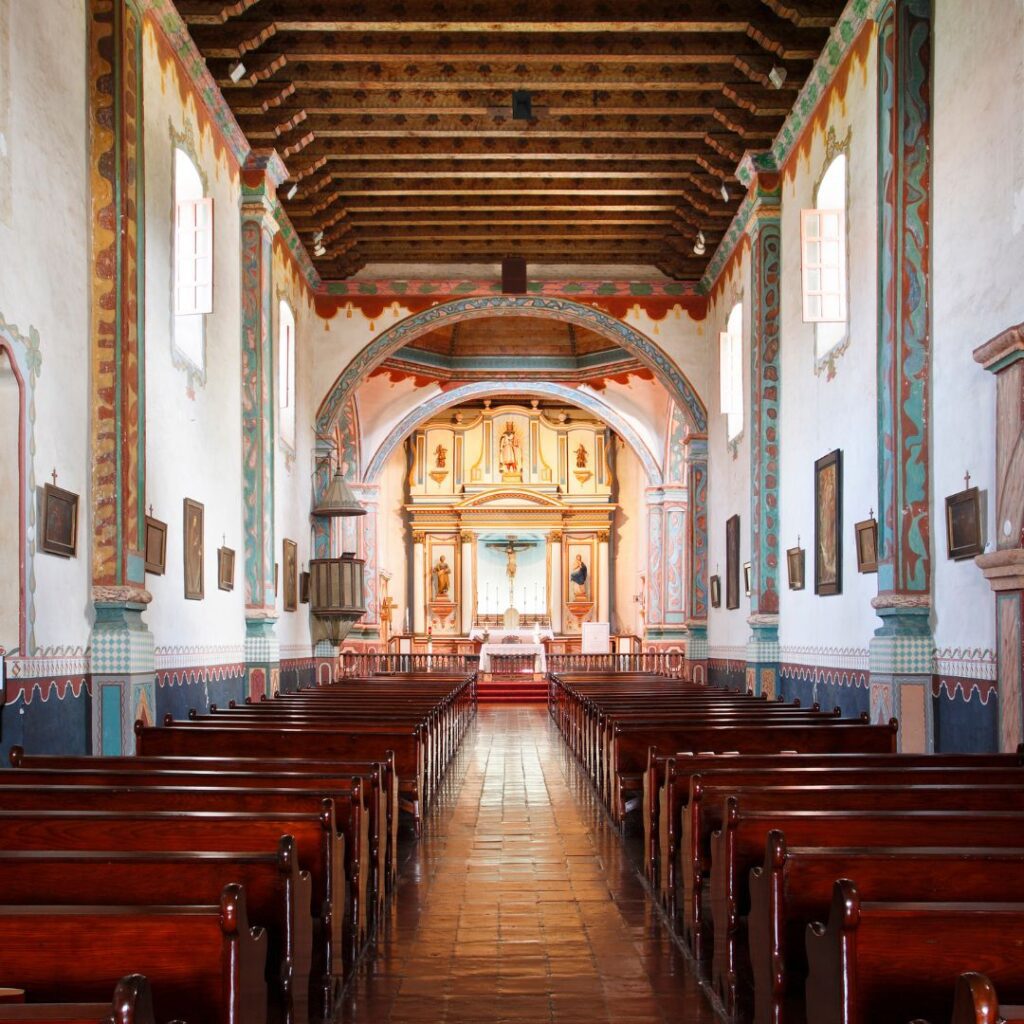
The art collection in the church is impressive, and a highlight during your visit. The Mission is actively working on restoring and preserving it’s collection. Do not miss the beautiful painting of Our Lady of Guadalupe by Spanish colonial master, Jose de Alcíbar, and the panel of the Final Judgment that is a copy of Jean Cousin’s painting of the same title.
The cemetery is beautiful and it is one of the oldest cemeteries in the area that are still active. Going in, you will see to the left a statue of Fr. Junipero Serra next to a crypt where Franciscan friars were buried. In the historic section you can also see a native memorial built in the 1830’s for the Luiseno who were buried in the cemetery during the Mission era.
The museum is located in the center of the arched hallway, in front of the fountain. It tells the story of the mission in different exhibit rooms, and it is very easy to follow. The museum displays a beautiful collection of artifacts such as furniture, paintings, native baskets, religious vestments and the original grant signed by Abraham Lincoln, amongst other interesting objects. It is very accessible, and the displays are very well curated. They have an audio tour that you can add to your admission for $3 and it is available in English and Spanish. Going out of the museum is one of the best gift shops in the area. There are religious items and quirky souvenirs. The selection is quite interesting, and just looking around at all the trinkets will be an interesting experience.
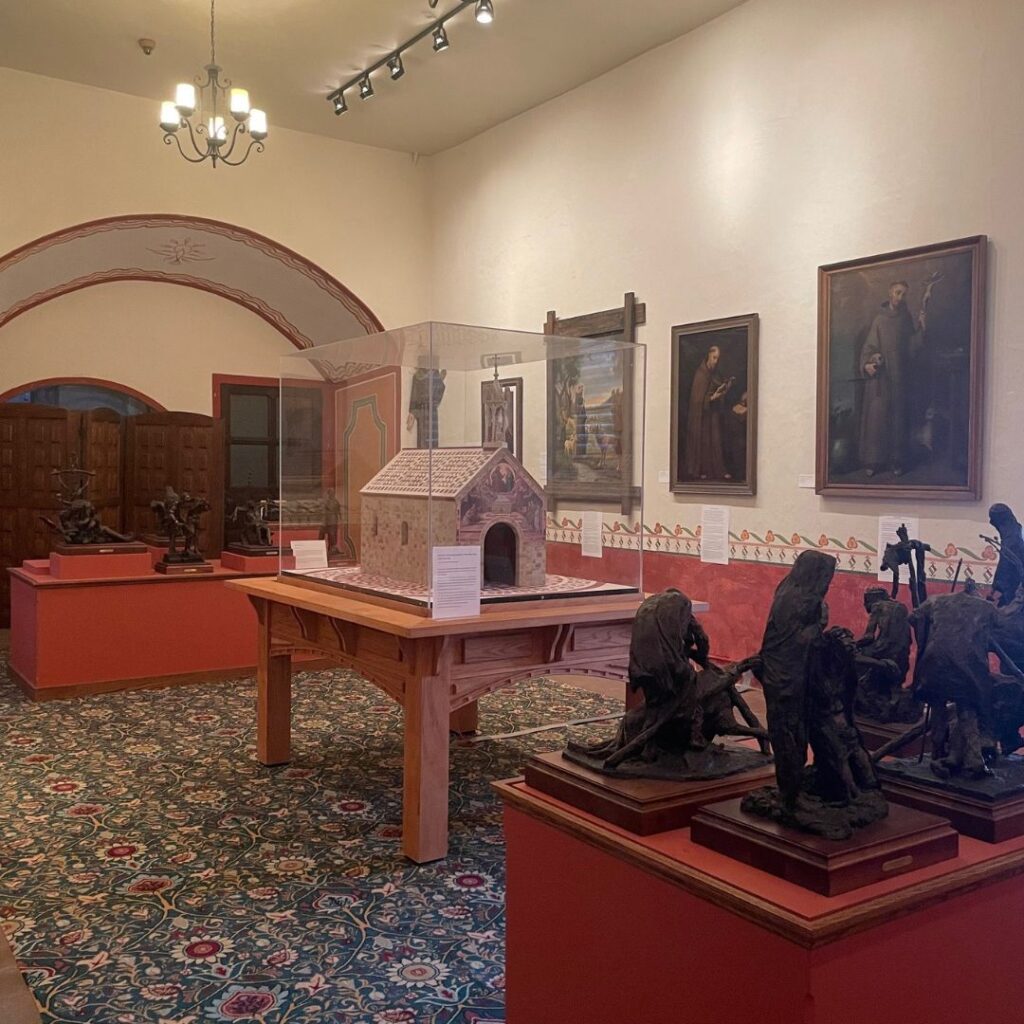

Some areas of the Mission are not open to the public because there is a Retreat Center on site. Gardens are still visible from the museum, coffee shop and there is an area to take photos of the old arch that used to be the entrance of the Mission, and the old pepper tree, the first in California. According to tradition, a Peruvian sailor sold Fr. Peyri the seeds, and the pepper tree that is still growing in the center of the old quadrangle at almost 200 years old. The mission quadrangle is today a beautiful garden, which is part of the retreat center. To walk through the gardens, you can stay at the mission on retreat, or do it during a guided tour on Saturdays and Sundays. You can see the missions website for information on retreats and other activities.
After stopping at the lovely coffee shop and refueling, don’t forget to see the ruins of the soldiers barracks in the front, and walk to the lavandería, a beautiful set of fountains that was used as laundry and irrigation during the Spanish era. This is my favorite area to take photos, and walking back to the mission from this area will provide the best view of the whole complex to finish your day at Mission San Luis Rey.
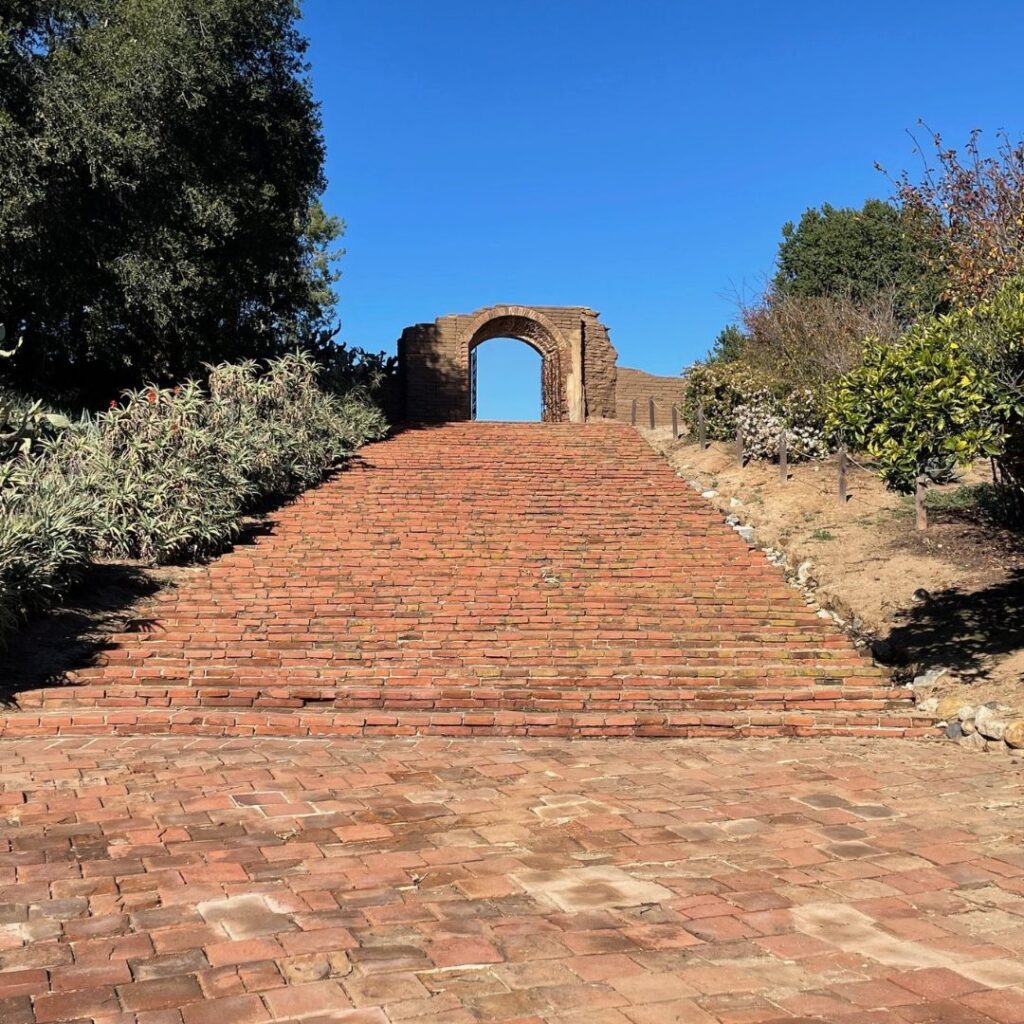
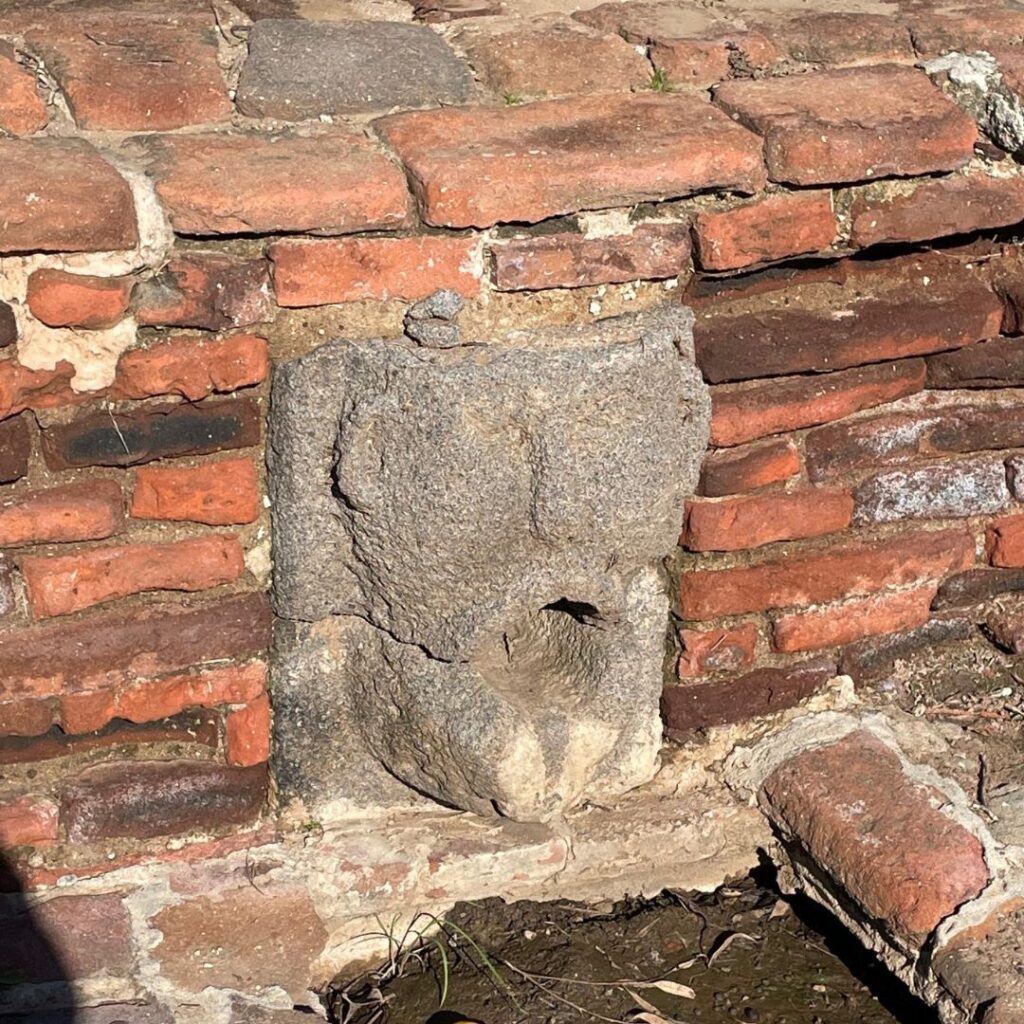
After your visit to the Mission:
Where to eat
A short drive west on Mission Ave. will take you to the best dinner in Oceanside in my opinion. The Pit Stop dinner. With an outstanding collection of old cars and memorabilia, the restaurant looks like an old garage and the food is delicious. Definitely the best dinner in the San Luis Rey area of Oceanside.

